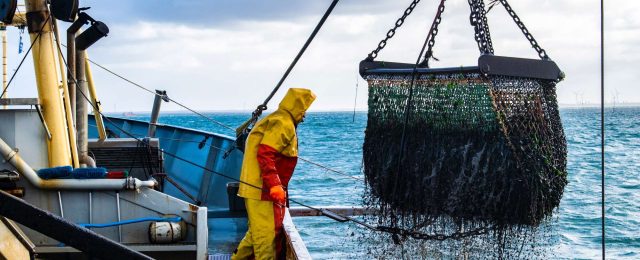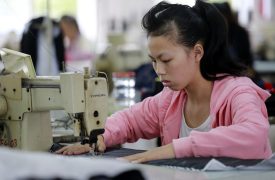Human rights snapshots of companies: Lessons from Denmark, Finland, Ireland and Belgium

By multiple authors
In recent years, several governments, academic institutions and civil society organisations from various countries have used the Corporate Human Rights Benchmark Methodology to get a ‘snapshot’ overview of human rights performance by companies based in their region. This article identifies some of the key lessons that emerged from snapshots in Denmark, Finland, Ireland and Belgium. Whilst the motivations and objectives of these assessments varied across countries, all four help us to understand existing corporate practice when it comes to respecting human rights.
See the Methodology for the 2022–2023 Corporate Human Rights Benchmark.All companies have a responsibility to respect human rights as set out by the United Nations Guiding Principles on Business and Human Rights (UNGPs). Companies are expected to have formal policy commitments to respect human rights; implement human rights due diligence processes that allow them to identify, prevent, mitigate and account for how they address human rights impacts; and establish processes that enable the remediation of adverse impacts.
These snapshots assess the extent to which companies’ policies and processes are already aligned with the high-level expectations of the UNGPs. The results clearly show that many companies are not yet able to demonstrate full alignment. This is an important observation given regulatory trends across Europe, where the corporate responsibility to respect human rights is becoming increasingly enshrined in legal frameworks – the EU Proposal for a Directive on corporate sustainability due diligence being the most recent of such developments. See the Proposal for a Directive on corporate sustainability due diligence and annex on the European Commission’s website.
Companies give a mixed response
With each snapshot companies were, in most cases, informed of their inclusion and permitted to comment on their draft assessment prior to consolidation. However this was not a requirement, nor did companies receive additional points for engagement. Rather, the aim was to give companies a chance to inform the research team of any publicly available documents or information that may have been overlooked during the assessment process. The extent of company responses varied across countries. In Denmark, Ireland, and Finland, the level of engagement was higher than in Belgium. This may be partly explained by the fact that in the first three countries, more direct and sustained efforts were made to engage with the companies. Engaging Belgian companies proved particularly challenging, especially for those in sectors such as construction or logistics, which have mostly ‘European’ supply chains, and found it difficult to relate to human rights risks.
Approximately half of the 12 respondent companies reported that the snapshot would most likely impact the company’s human rights due diligence processes, and result in changes to how they communicate on the topic.
The extent to which companies used the results of the assessments also varied. In Denmark, the Danish Institute for Human Rights (DIHR) conducted a follow-up survey to the snapshot which revealed positive effects. Approximately half of the 12 respondent companies reported that the snapshot has led to a renewed attention of human rights by management; that it would most likely impact the company’s human rights due diligence processes, and result in changes to how they communicate on the topic. In Finland, the results were published on the project’s website. Head to the Hanken School of Economics’ website to learn more about the Finnish project and access the full report The benchmarked companies noted that the ability to compare their assessment with peers provided a fruitful opportunity for internal learning. In Ireland and particularly also in Belgium, the key contribution of the exercises was likely awareness-raising, as familiarity with the UNGPs or even human rights was, in many cases, limited before the start of the assessment.
The overall impression is that while many companies are aware of their obligation to respect human rights, there is a lack of understanding as to what this entails in practice. To meet their responsibilities as outlined by the UNGPs, businesses must be able to ‘know and show’ how they are managing their human rights risks and impacts. A common finding across the assessments was that this level of disclosure is severely lacking.
Engaging other stakeholders remains a work in progress
Aside from learnings for individual companies, the snapshot findings have also been utilised in many other ways. In Belgium, the snapshot formed part of the National Baseline Assessment (NBA) commissioned by the federal government, which will feed into a new national action plan on business and human rights. Read the final report of the National Baseline Assessment on Business and Human Rights in English, or the Executive Summary in English, French and Dutch. Watch a video recording of the Danish Minister of Industry, Business and Financial Affairs being questioned about the snapshot results during an open consultation by the Foreign Affairs Committee on October 2020. See the guidance document which was published on the website of the Irish government’s Department of Foreign Affairs in May 2021. The Finnish study – commissioned by the Prime Minister’s Office – involved other key government actors, with representatives from the Ministry of Economic Affairs and Employment as well as the Ministry for Foreign Affairs all actively involved throughout the project. In Denmark, the Danish Minister of Industry, Business and Financial Affairs was questioned about the snapshot results – some political parties even pushed the government to take a proactive role in mandating human rights due diligence.In Ireland, the findings were shared with the Irish government’s National Action Plan Implementation Group, who used them to develop a guidance document to help businesses begin the process of implementing the UNGPs.
Beyond government, attempts were also made to engage with other stakeholder groups. For instance the Belgian team invited the trade union representatives of the benchmarked companies to react to the assessment of their company. While several representatives responded to this invitation, their experience and expertise on human rights remained, for the most part, limited to issues within the company, rather than issues extending to the company’s supply chains. In Denmark, Ireland and Finland, the studies have served as a useful entry point for engagement by civil society groups. For instance, the Danish snapshot report was launched at a conference organised by civil society organisations on the role of regulation in advancing human rights and environmental due diligence in a Danish and EU context. Another example is a report by the Irish Coalition for Business and Human Rights, who say that the (low) results are evidence of the need for mandatory human rights due diligence legislation. Read the report by the Irish Coalition for Business and Human Rights: Make it your business: How Ireland can ensure businesses respect human rights and the environment.
Regular country-based snapshots would provide valuable insights from the national context and bring the issue closer to home, serving as a reminder that the UNGPs concern all companies, including those operating solely in so-called low-risk countries.
It is important to recognise that any assessment of companies’ alignment with the UNGPs that focuses on corporate documentation must contend with a key limitation: the ability to engage with affected individuals and communities to understand the actual and potential impacts of business activity. While the full Corporate Human Rights Benchmark (CHRB) Methodology goes some way towards addressing this through its inclusion of measurement themes that consider corporate performance, the snapshot methodology does not include these. While this enables more agile research for smaller teams, researchers in all four countries recognise this as an important gap.
A decade on from the UNGPs – where to from here?
There is clearly value in using the CHRB methodology for national-level snapshots. Compared to the annual CHRB assessment done at a global level, regular country-based snapshots would provide valuable insights from the national context and bring the issue closer to home, serving as a reminder that the UNGPs concern all companies, including those operating solely in so-called low-risk countries. See the report ”Raising the ambition – increasing the pace” published by the United Nations Human Rights Special Procedures” for key recommendations for the next decade. Notwithstanding these benefits, there are inevitably drawbacks to such approaches – snapshots can only deliver insights based on how companies are communicating their efforts. Some companies may do more than what they say externally, while others may present an unrealistic picture of their activities. Despite these limitations, snapshot assessments provide useful insights into the overall levels of disclosure and underlying human rights efforts among the largest companies in the respective jurisdictions. As one component of a broader research agenda, the snapshots are a useful baseline, highlighting areas for further investigation and attention.
This article was written by:
- Benn Hogan, Visiting Researcher, Trinity College Dublin (Ireland)
- Suvi Halttula, Senior Advisor & Founder, 3bility Consulting (Finland)
- Boris Verbrugge, Senior Researcher, KU Leuven University (Belgium)
- Florence Khardine, Coordinator, Danish Institute for Human Rights (Denmark)
This blog is a part of a series that delves into the different elements of our revised Corporate Human Rights Benchmark Methodology, which was published on 30 September 2021.


